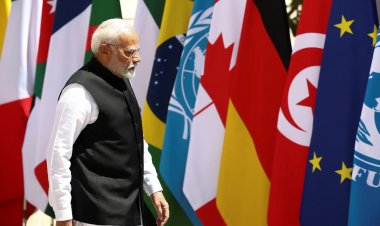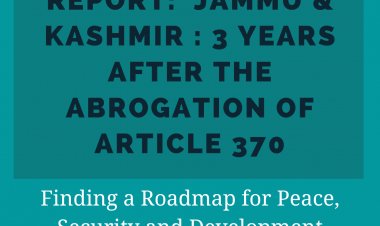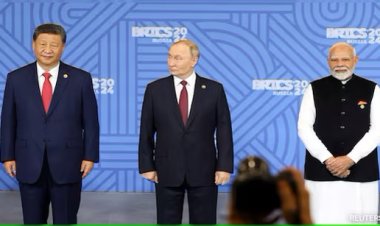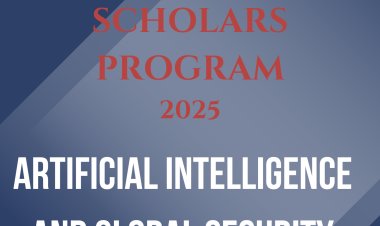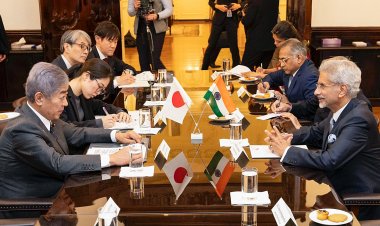China's Belt and Road Initiative and Its Impact on Education Sector
In this article, we will examine how China along with other BRI countries is trying to improve and coordinate its educational policies. Further, we will also discuss how this will create pro-china allies; problems the other nations are likely to face and the challenges being faced by China through this initiative.
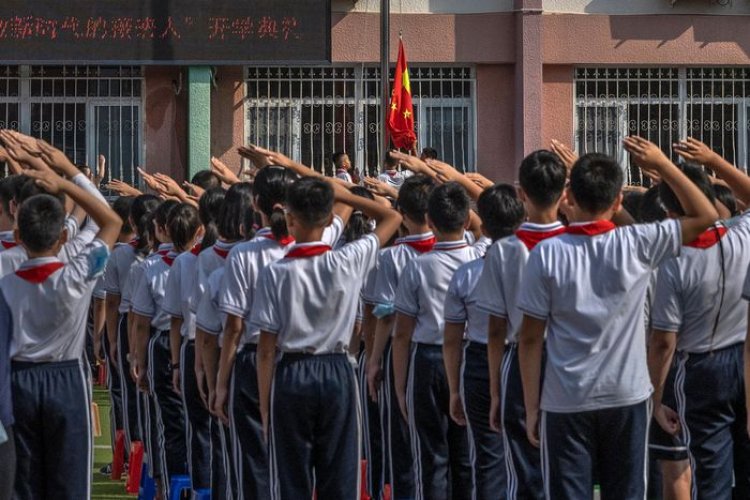
Analysis
By Nikita Anand
A peaceful world is built on harmony within variety and we all live in an interconnected world where the initiative taken by one benefits and leads to development, prosperity, growth of all due to cooperation and trust. One such initiative has been taken by China which is the Belt and Road Initiative (BRI) to increase its influence beyond its border. BRI is a massive infrastructure and development program launched by the Chinese Government in 2013 connecting Africa, Europe and Asia. It is connecting 155 countries, 75% of the world’s population and half of the World’s GDP. China has emerged as a leader in contemporary politics due to its recent rapid economic development, technical achievements, and growing influence on the world stage. China aims to emerge as one the strongest power in the world by strategically manoeuvring its hard power capabilities coupled with soft power demonstration in order to pursue its strategic motivations and ambitions in a non-coercive manner.
“Strength of the Pack is Wolf, and the strength of the Wolf is Pack” is a saying by Rudyard Kipling which he mentioned in his book “The Jungle Book”. In this context the Wolf is China and the pack is other countries who are taking part in the BRI initiative. Without the pack (BRI countries) this initiative would not be successful for China. The BRI prioritises social advantages while also emphasising financial gains. By constructing the BRI, China will be able to create a close-knit global society with a common destiny. Building education as ‘Soft infrastructure’ under the BRI initiative is one of its most significant elements.
In this article, we will examine how China along with other BRI countries is trying to improve and coordinate its educational policies. Further we will also discuss how this will create pro-china allies; problems the other nations are likely to face and the challenges being faced by China through this initiative.
BRI Region: Importance to Education Sector
The BRI initiative taken by China not only focuses on Digital connectivity, transport, easy trade and communication it also focuses on cultural exchanges and education sector. In July 2016, the Ministry of Education issued the Education Action Plan for the Belt and Road Initiative under 2016 Action Plan (Bowen Xu, 2021). This is a new form of globalization which has led all the BRI countries to come together and form a collaborative community working on the education sector. Education has become an important factor as it highlights aspects of ‘knowledge economy’, future-oriented digital infrastructure and interconnectivity. Education export can be seen as a tool to advance cultural diplomacy and soft power.
China aims to build a structure where all the governments of BRI countries coordinate on the education policies. Efforts are also being made to make bilateral, multilateral, sub- regional agreements to cooperate on various policies. All the BRI countries are expected to work together on challenges and opportunities faced by the students in development and optimal resources utilization. It also aims to increase the quantum of Mandarin language teachers to meet their demands in the BRI countries. Also, to boost youth exchange programs emphasis is laid upon startups, news media and social media.
Four Programs have also been launched under the BRI education initiative.
- The first one is Silk Road 2-way Student Exchange Enhancement. It aims to make China a popular destination for education and to cultivate talent, improve and ensure safety, health and success to students studying in China from overseas.
- The second program is ‘Silk Road Cooperation in Running Educational Institutions and Programs Enhancement’ which is focusing on vocational and technical colleges to cooperate with other business and industries entities.
- The third program is for Silk Road Teacher Training Enhancement in which teacher and principal training visits are organized. Other certification courses are available with the objective of ensuring equitable distribution of resources and balanced development of education among BRI countries.
- The Silk Road Joint Education and Training Enhancement Program is the fourth one which encourage universities in the region to carry out joint education and training programs needed to meet the urgent development demands of the Belt and Road countries, in fields such as languages, transportation, architecture, medical science, energy, environmental engineering, hydraulic engineering, bio-sciences, marine sciences, ecological preservation, and cultural heritage protection.
One of the most important initiatives under the 2016 Action Plan credited for making the initiative a success is done by the Confucius institutes. More than 525 Confucius Institutes and more than 1113 Confucius Classrooms are made around the world and 154 Institutes and 149 Classrooms are located in 54 BRI countries (MoE 2019). It is the driving force to the BRI and aims to teach Mandarin and other languages, organise programs and lectures related to BRI countries. It also offers free training, scholarships to study in China and language courses in countries like the US, Europe, Asia and Africa.
Also, BRI's goal involves building up a Digital Silk Road and completing its infrastructural needs in collaboration with other countries. For this China’s top vocational and technical institutions overseas are asked to jointly develop educational resources and programs. In this process, the institutions are collaborating in particular with Chinese high-speed railroad and telecommunication companies (MoE 2016). It is also focusing on technological advancement with the building up of laboratories, research centres through the sharing of resources and science exchanges with other countries. Peking University has also established a brand-new research centre to advance academic inquiry on the BRI. In order to cultivate young academic talent, build knowledge, and help nations along the Belt and Road route, the recently established institute mobilises, integrates, and promotes the university's rich and diverse resources (d’Hooghe, 2021).
Many universities in China are also offering many courses related to various streams to advance the level of BRI projects. For example- Tsinghua University is offering an International Master of Public Administration in the Belt and Road Initiative (IMPA-BRI) program., the People’s Bank of China School of Finance (PBCSF) offers a prestigious ‘BRI Finance EMBA’ Program, which targets international business leaders from China and Southeast Asia and focuses on the role of regional economies in the BRI (d’Hooghe,2021).
Talking about the research centres, China has also collaborated with many research institutions and is inviting them to do research. This is one of the most important educational initiatives taken by them. They have also built up ties with other organizations to specialize in other important areas which are related to scientific and technological issues which is essential for all BRI countries. One example is the UK-China-BRI Countries Education Partnership Initiative, set up by China’s Ministry of Education and the British Council. The initiative aims to provide seed funding for UK universities to develop multi-country education collaboration with institutions from China, and ASEAN and African countries (d’Hooghe, 2021).
Language not only plays a communicative role in the BRI but also provides the base to the regional and cultural development to fulfil China's national interest/ security. One of the challenges faced by the students is language barrier. Many language courses, scholarships have been provided to attract students from other BRI countries. China is offering Chinese as a foreign language (CFL) course to citizens of other nations. Many universities now have also opened the option to study their courses in the English language too. This helped students to continue their education by spending very less money and learning Mandarin which they couldn’t have been able to do without the provision of scholarships by the Chinese government.
China’s public diplomacy goals suggest building a community where there is respect for China's policy goals and to help China build its allies (Bowen Xu, 2021). The other aim of China is to bring openness, deeper integration, affordable education, foreign exchanges and to bring for the students of these countries. They will also be able to reinforce a component of the salvation movement, which is to "learn from barbarians to ward off barbarians," or, more clearly explained, to "learn from the west to make china strong." The growth which will take place in the other parts of the universities will eventually benefit the Chinese as the students will go and learn in other parts of the world and bring back the knowledge, skills they have learned in foreign land back to their homeland. Its objective is to encourage talented Chinese individuals who have received education overseas to move back to China and grow its impact on the global higher education sector. The west is also in fear of China as it is extending its boundaries with the launch of the BRI initiative that is a marker of being a superpower. China aspires to plan a new world replacing US led domination with the help of its increased influence in economics supremacy which might soon result in military might in the future.
Is BRI Initiative a Threat to USA And India?
The influence of the United States has recently been declining. Its policies of late have been protectionist and isolated it from the outside world. In the West, there is a decline in Social Sciences and cultural exchanges. The USA believes that China is a strategic threat and what is happening under BRI is much larger than what is visible. The USA is concerned about China’s heavy investments in the USA’s education sector that will lead to competition between the Chinese and American workforce and impacts America’s democratic values.
China now has the opportunity to have a greater voice and impact on the world. China is creating allies through the BRI plan, which might be perilous for the United States. The BRI countries will have a better and stronger relationship with China as a result of the efforts made by China in terms of infrastructure, trade, education, and scholarships. Through increased soft power rather than through force, this is assisting China in becoming more significant and influential in the international arena.
India has refrained from participating in the mammoth initiative taken by China, as BRI is aimed at boosting China’s strategic presence in the region. Through increased educational endeavours, China is using a trump card, and it may negatively affect India by taking people’s jobs and creating security issues because of the China-Pakistan Economic Corridor (CPEC), which passes through Indian territory that is illegally held by Pakistan.
Challenges
China and other BRI nations will confront a number of challenges when collaborating in the field of education. To begin with, it is difficult to surpass the United States in terms of education and culture. It hosts prestigious and highly regarded universities and is placed first in the education sector of the Soft Power30 ranking.
Second, the BRI nations will become financially and educationally dependent on China. This dependence will enable China to consolidate its position of power and expand its influence, which could have negative effects. These effects between BRI nations and China, particularly the USA, may also lead to geopolitical tensions.
Another problem is the language barrier. Chinese dialect, culture and people's background are substantially different from those in other BRI nations. This would make it difficult for China to be effective and relevant in meeting the demands of other nations in the field of education.
Another challenge would be the different curriculum and amount of technology among BRI nations. China may produce an uneven distribution of resources by offering students who reside in urban areas with great opportunities while ignoring the rural sections of BRI nations. Many of the sites are blocked in China by the government. Chinese’s Government keeps a vigilant eye on domestic as well as international students which acts as a challenge in academic and intellectual development. The COVID-19 pandemic and zero- covid policy protest held in China led to the piecemeal implementation of policies and the effectiveness of the work as people including students were frustrated due to loss of jobs, deaths around them.
Conclusion
By 2050, the B&R regions aim to contribute 80% of global GDP growth, and advance three billion more people into the middle class. The social base of the BRI is based on interpersonal relationships.Ten years ago, countries around the routes began cooperating on projects in the fields of culture, tourism, education, think tanks, poverty alleviation, and disease management, all of which helped to bind these people together.. BRI has a lot of potential and scope for global academic development as it is still in its infancy among educators, decision-makers. China will require more individuals with training in the social sciences and associated fields as it expands its foreign engagement in order to inform its policymaking. More professional scholars who work at China's new think tanks are needed to advise the country's leadership in order to engage the rest of the world more. There will undoubtedly be new subjects as the BRI develops over the ensuing 26 years. The Chinese philosophy underlying BRI is "peace and development" and a "future for humanity" which it is actively seeking to demonstrate in all areas, including education, which will have a significant positive effect on all BRI countries.
Disclaimer: This paper is the author's individual scholastic contribution and does not necessarily reflect the organization's viewpoint.
Nikita Anand is currently pursuing Masters in Diplomacy, Law and Business from OP Jindal Global University. Her interest includes Foreign policy and Public Policy.

